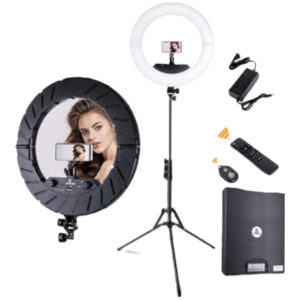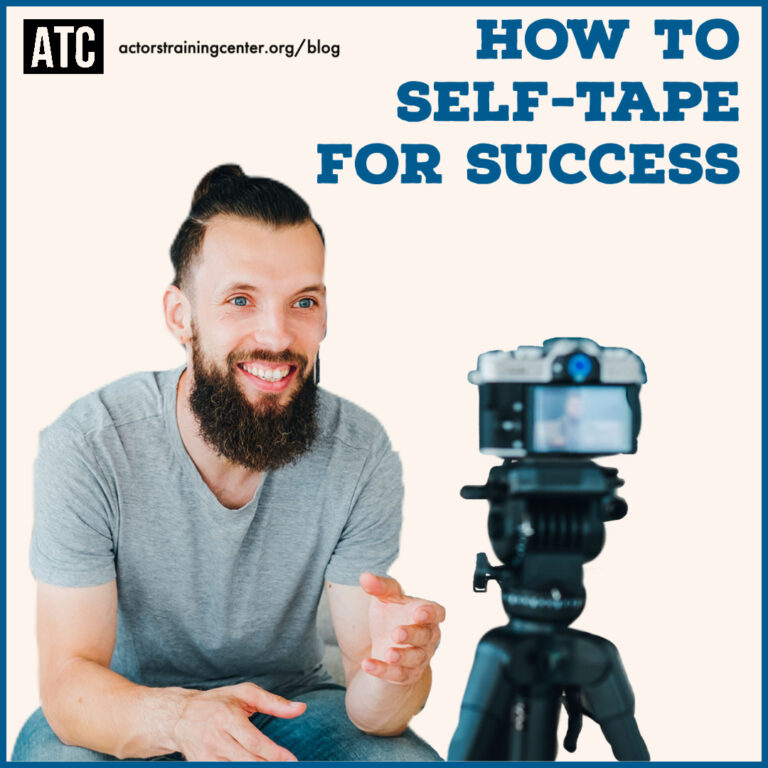In an increasingly digital society, actors find themselves in front of the camera now more than ever. As the world evolves so must the theater, and casting directors are trading in audition studios for self-taped performances live from actors’ garages, basements, studios- or anywhere the camera takes them!
Navigating the world of self-tapes is an obstacle as actors must finance their own equipment, have a professional set-up, and spend as much time taping before having to submit a video- often in a very short period of time.
While the concept of setting up a DIY film-set is intimidating, there are also many pros to this method of auditioning. For instance, having the ability to select which tape to send in grants actors more control over an audition than ever before. There are plenty of other ways to garner a sense of control as the performer.
1. Selecting the Best Background
When sending in a self-tape, the background plays a more crucial role than one would initially think. If an actor sent in an audition they taped outside, the people walking by, or the sound of the wind through the video could cause distractions leading to them getting cut.
The best background tends to be a blank one. Many actors invest in a backdrop such as the one linked here.
 Neewer Chromakey Backdrops, Double-Sided Green Screen and Blue Screen, 2-in-1 Collapsible and Reversible Background for Photography, Gaming and Live Streaming, 5’×6.6’/1.5m×2m, AMAZON
Neewer Chromakey Backdrops, Double-Sided Green Screen and Blue Screen, 2-in-1 Collapsible and Reversible Background for Photography, Gaming and Live Streaming, 5’×6.6’/1.5m×2m, AMAZON
These have become popular as they provide a pop of color to help actors stand out. However, if an actor chooses to use a wall in their home- it is important to ensure that it is a solid color wall with no distracting patterns, posters, or pictures.
A good method to cover-up distractions such as doorknobs or artwork that can not be moved is by hanging a sheet or blanket- and the actor must be sure to pick a color that will help them stand out.
Gray is often a good go-to color for a backdrop if the actor is using sheets from home or does not want to purchase anything new. Sticking to bold neutral colors accentuates the actor without pulling focus. However, if an actor wants to go for a colorful choice- blue and green tend to be the least distracting.Other neutral backdrop suggestions to think about would include colors such as maroon or
2. Styling the Audition Outfit
How can an actor determine what color will make them stand out? For those with blue or green eyes, it’s popular to go with a blue or green shirt to bring out their eyes. However, there is another way to determine what color is right for the actor.
A good place to start is in determining the undertones in their skin. If against white, a person’s skin appears pink, red, or blue-ish, this means the skin has cool undertones. For warm undertones against white the skin would look yellow or golden. Next actors should pay attention to their eye color. Cool eye colors include green, gray, and blue eyes. Warm eye colors are hazel, brown, or amber eyes. Finally, look at your hair. Black, gray, ashy brown, white or ashy blonde hair are the cool colors. Caramel, brown, autumn, strawberry blonde, and yellow hair fall into the warm category.
If an actor has more cool features they should try dressing to that color palette, and the same goes for warm.
3. Lighting
Casting directors know actors do not have access to full photography-grade lighting studios. However, to come across more professionals having quality lighting is key.
Choosing a room with good lighting is the first step and it is essential to ensure that there is no backlighting. This means, don’t stand anywhere with a window directly behind the mark, it will make the actor appear dark and less visible.
If using natural light through a window, always stand facing the window to allow the sun to naturally give a glow. Additionally, be sure to remove any shades or items that would cause a distracting shadow.
If a floor lamp is being used, keep it at eye level. Additionally, using a light bulb that keeps true to natural skin color is important.
If natural light is not being used, a good method is a two-lamp set up. Keeping one lamp on either side of the camera, both at a 45 degree angle will provide optimal lightning. And the secret weapon to ensure good lighting- a ring light.
Ring lights can be used to the actors advantage by making them appear extremely well-lit and professional. Ring lights can rest directly around the camera, perfectly casting light onto the actor. Several recommendations for ring lights are linked below.
 Ring Light Kit:18Inch Outer 11.8Inch Inner 55W6700k Dimmable LED Light , Tripod Stand, Remote Controller,Box for Camera,Smartphone,YouTube,TikTok,Self-Portrait Shooting,CRI90,Black
Ring Light Kit:18Inch Outer 11.8Inch Inner 55W6700k Dimmable LED Light , Tripod Stand, Remote Controller,Box for Camera,Smartphone,YouTube,TikTok,Self-Portrait Shooting,CRI90,Black
 Neewer Ring Light Kit:18″/48cm Outer 55W 5500K Dimmable LED Ring Light, Light Stand, Carrying Bag for Camera,Smartphone, YouTube,TikTok,Self-Portrait Shooting, Black, Model:10088612
Neewer Ring Light Kit:18″/48cm Outer 55W 5500K Dimmable LED Ring Light, Light Stand, Carrying Bag for Camera,Smartphone, YouTube,TikTok,Self-Portrait Shooting, Black, Model:10088612
4. Know When to Stop
Having the ability to record over and over again until it feels perfect is so tempting. The reality is, there will never be a “perfect” take. There will be good ones and bad ones and some will feel better than others. It is the actors responsibility to know when what they have is good enough, and to stop overthinking.
If the actor doesn’t allow the taping process to come to a natural end, it will lead to being overly knit-picky and could result in a submission of a take that is too forced. Actors must allow their natural talent to shine through and that often happens through adrenaline which is more prominent at the start of the taping day.
Taking practice tapes prior to the real ones allows for the actor to get comfortable in their skin and set-up and after that, taping should not become a 24-hour ordeal. Actors must allow themselves to be in the moment and have creative freedom in multiple takes, and then they must restrict themselves and refrain from taking a hundred takes.
5. Follow Directions
Before submitting, the actor must ensure they have followed all of the given instructions. Even if it is the best audition in the world, if a slate is forgotten, the actor could be too. Make sure to thoroughly check where the video needs to be uploaded, if a resume or headshot is needed, etc.
Provide contact information so casting can reach out and be sure to dictate your measurements, credentials, or special skills if asked in the instructions.
Trust the success of the tape, review it once, send it in, and reward yourself with a self-care day, special dessert, or fun with friends- auditioning is just as hard remotely as it is in person and actors deserve to celebrate them being done!
https://www.bookfromtape.com/post/6-ways-light-self-tape
https://actinginlondon.co.uk/self-taped-auditions/
https://www.headcovers.com/resources/beauty/how-to-find-your-color-season/
—





